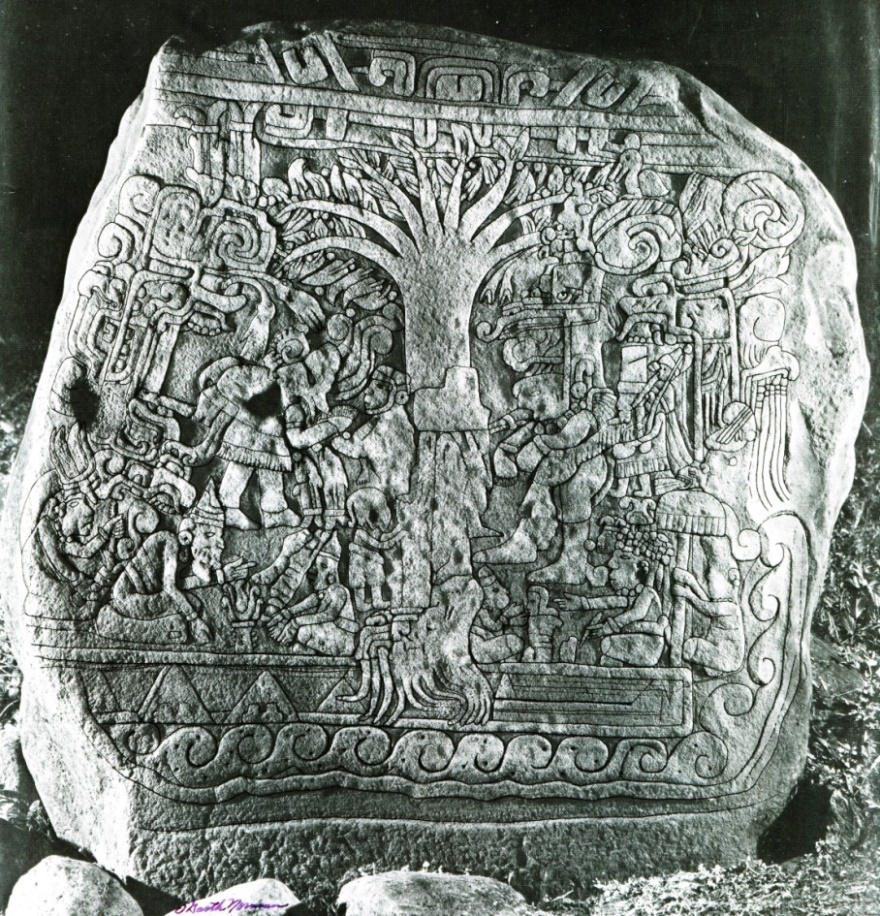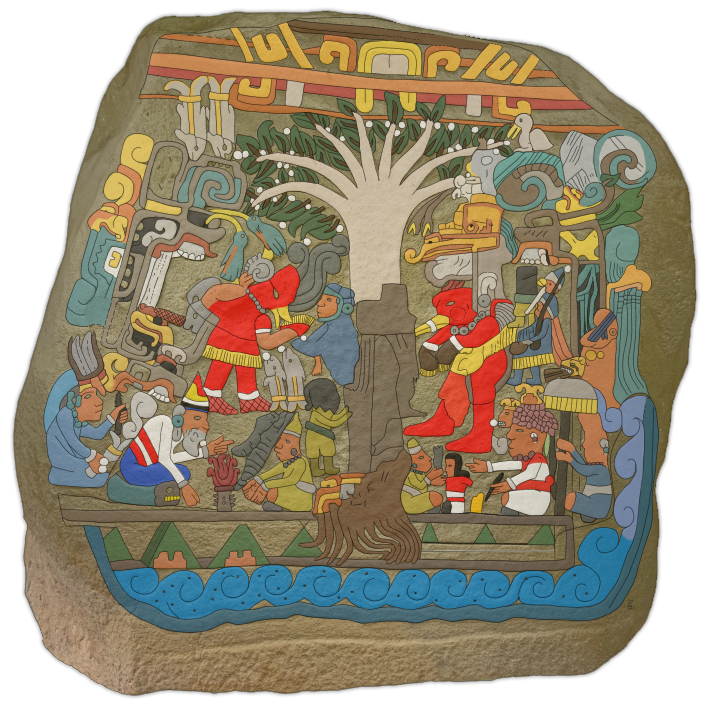The Tree of Life
Izapa Stela 5
“The Izapa Stela 5 stone is the most detailed rendering of any Tree of Life depiction in the world.”
—Mary Ellen Miller (Yale)
What is Izapa Stela 5?
The Izapa Stela 5 stone is a stone carving discovered at the Mesoamerican Izapa archeological sites in Chiapas, Mexico. The stela is well know for the style of carving and its detailed depiction of the Maya ancestral tree of life. Archelogists believe that the stelae at Izapa provide great insight into the cultural beliefs and mythology in the early Americas.
The Ancestral Tree of Life carving preserves a historic record of the Maya Five World Ages and calendar systems. It also illustrates the story of humanity’s origin and life on earth as held in pre-Columbian and Maya religion and mythology.

Featured Video
What is the story of the Izapa Tree of Life?
Uncover the story of the Izapa Tree of Life through the eyes of a young Maya girl in this educational video.
The Ancestral Tree of Life on Stela 5
The Ancestral Tree represents humanity’s journey from its 12 Tribal Ancestral roots at the bottom of the Tree to the eight fruit-filled branches near heaven.
The “red” Quetzalcoatl God, at the right center of the Tree, directs people to the Tree.
The “red” mother Goddess, at the left center of the Tree, gives the Tree’s fruit to a person who has followed Quetzalcoatl’s directions that led him out of darkness and to the tree. He partakes of the fruit, and is now reborn into the heavenly realm.

Quetzalcoatl God
Mother Goddess
White dots represent the fruit of the tree
12 Tribal Ancestral Roots
Person receiving the fruit
Hover over the points on the stela for hieroglyph identification.

Cloud and rain glyphs
Umbrella
Water glyph
Water representing time on Earth
Water evaporation
Water representing time on Earth
First Ancestral Family
First Ancestral Family
Hover over the points on the stela for hieroglyph identification.
Learn More with Videos
Life Cycle and Migration
The story of humanity’s origin and life on earth is expressed symbolically by the Stela 5 rain cycle surrounding the scene.
On the upper right, the spirit children descend from heaven, as represented by the cloud and rain glyphs, to their pregnant earthly mothers, as represented by the water glyph coming off the umbrella on the right which represents birth by their earthly mothers.
The blue water at the bottom represents time on Earth.
At death, the evaporation symbols on the left represent their spirits returning to heaven.
The family seated beneath the Tree correlates with the first ancestral Family of the Maya Popol Vuh migration account and represents a family on their life-cycle journey.
Learn More with Videos
The 260-Day Life Cycle
The Maya 260 gestation calendar begins on April 30th, conception day, when the sun is closest to the earth at Izapa. It ends on August 13th when the child is born—the Maya child, born at 14.8 degrees N. Latitude on April 30th will have the greatest chance of survival because the spring rains bring abundant food to nourish the newborn and mother.
On August 13, Stela 5 is placed at the August 13 beginning (S-5 A) of the 9-moon month count of the sacred Maya 260-Day Human Gestation Calendar that ends on April 30 with spring rains—just like most animals that mate in the fall and have their babies born in the spring when food will become more plentiful.
Restoring Stela 5
For many years, scholars have disagreed on the what is actually depicted on Izapa Stela 5 and the meaning of its hieroglyphs, leading to variation in renderings of the stela.
New Reflectance Transformational Light (RTI) technology now allows scholars to use light to map the surface of low relief carvings to accurately assess their depictions.
Featured Video
The Izapa Maya Tree of Life and the Book of Mormon
Izapa Stela 5 is the most detailed rending of the ancient worldwide Tree of Life in antiquity; while the ancient record of the Book of Mormon contains the most detailed written account of the Tree of Life in antiquity.
In this video, AAF explores the combination of the two records.
Interpretation of Izapa Stela 5
by V. Garth Norman
To browse more in depth descriptions and illustrations of Stela 5 click the link below.

